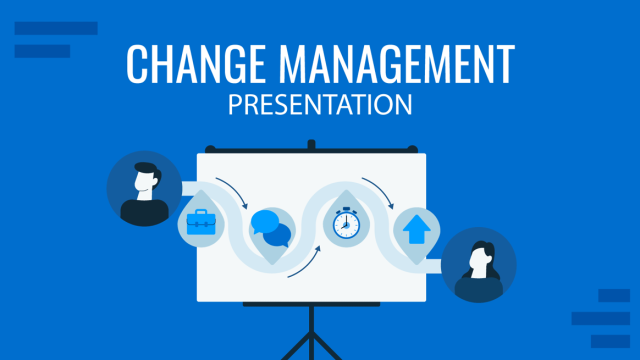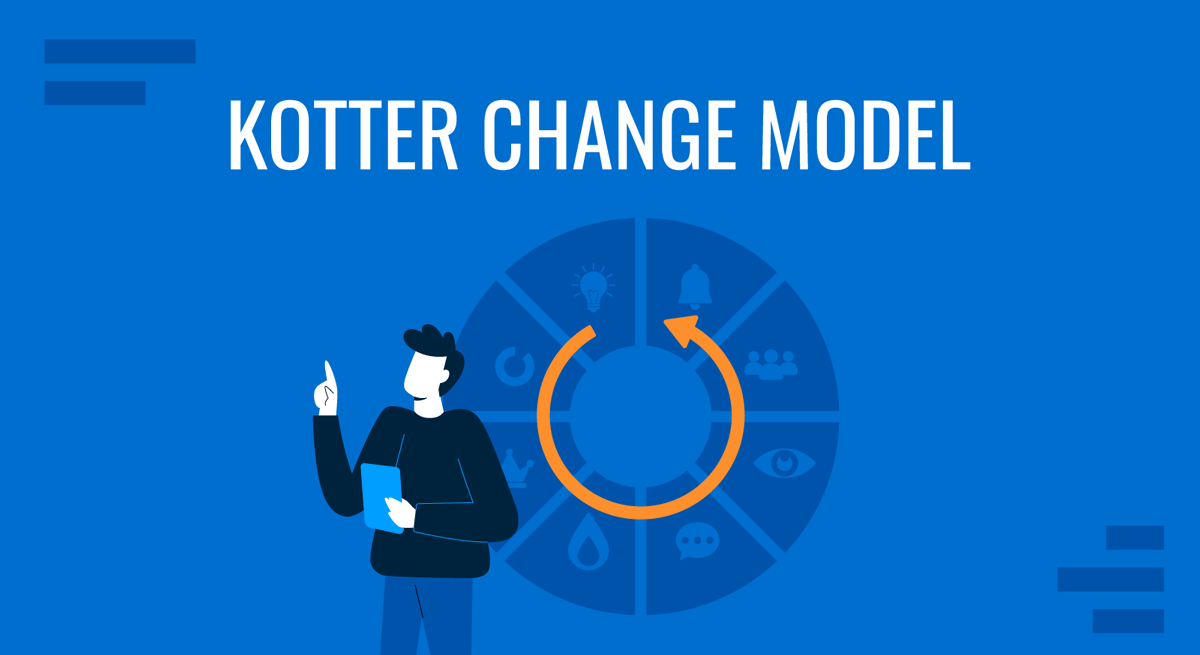
Implementing change is a complex and challenging process. Ironically, that might only be the one constant thing in every organization. Change is meant to disrupt “business as usual”; it’s uncomfortable that’s why it’s often met with resistance from employees.
Nonetheless, no matter how difficult it is, every business must adapt to change for the sake of development. But how do you do that? Is there a perfect way of delivering change?
While there might not be a “perfect” way to deliver change, there are proven methodologies and management models that can significantly enhance the chances of success. One such framework is Kotter’s 8-Step Change Model, developed by renowned change management expert John P. Kotter.
Table of Contents
- What Is Kotter’s Change Model?
- Kotter’s 8-Step Change Model [Applied]
- Benefits of Implementing the Kotter Change Model in Organizations
- Conclusion
What Is Kotter’s Change Model?
Companies often embark on transformational journeys to remake themselves into significantly better competitors. However, 70 percent of these change initiatives fail, according to Kotter in his 1995 book Leading Change. In the same book, he extracted valuable lessons from the success factors of the remaining 30 percent.
According to Kotter, transformation is a process that usually requires considerable
time. This is the basis of his 8-Step Change Model.
Kotter’s change model provides a roadmap to guide organizations through the change process effectively. It comprises eight sequential steps to tackle specific change delivery aspects, emphasizing leadership, communication, and employee engagement.
Here’s an overview of each step:
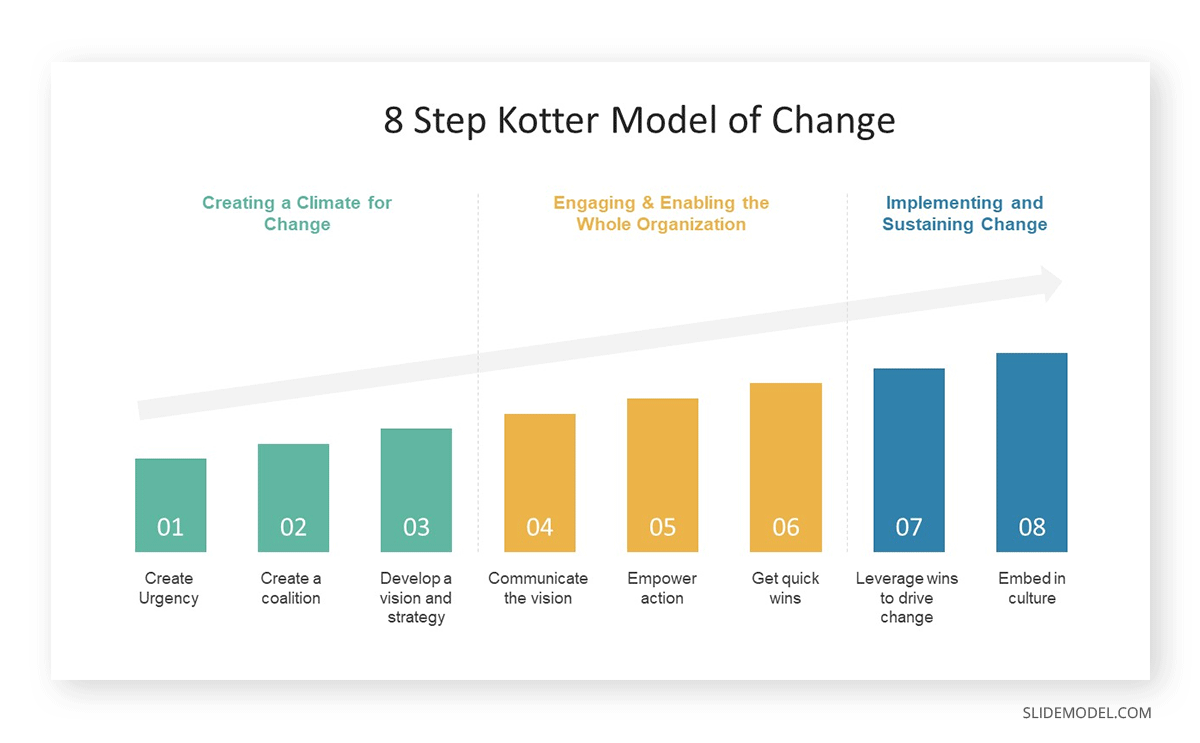
- Create a Sense of Urgency: Build awareness among employees about the need for change by highlighting the potential risks and opportunities associated with the status quo.
- Build a Guiding Coalition: Form a dedicated and influential team of leaders who can drive the change effort and gain support from key stakeholders.
- Formulate a Change Vision: Develop a clear, compelling vision articulating the desired future state and outlining the required strategic initiatives.
- Communicate Vision: Effectively communicate the change vision to all employees, ensuring it is understood and embraced throughout the organization.
- Empower Action: Empower employees to take action by removing obstacles, providing resources, and fostering a supportive environment for change.
- Generate Short-Term Wins: Set achievable short-term goals and milestones that demonstrate progress, create momentum, motivate employees, and build confidence in the change initiative.
- Build on Wins: Capitalize on the achieved wins and use them as a foundation to drive further change, continuously improving and adapting the approach.
- Institutionalize Change: Anchor the change into the organization’s culture and processes, ensuring it becomes the new way of operating over the long term.
Kotter’s 8-Step Change Model [Applied]
Codecr, a software solutions provider, faced the significant challenge of losing potential customers due to a slow response time for inbound sales leads. Prospective clients sought prompt information and assistance, but the company’s existing processes were causing delays and missed opportunities. This incident compelled the company to revamp its customer relationship management practices.
Let us use the hypothetical example to examine Kotter’s 8-Step Change Model and demonstrate its practical use.
1. Creating a Sense of Urgency
Many employees refuse to adopt change because they don’t understand the thought process behind its need. The initial stage of Kotter’s change model focuses on breaking that resistance and bringing people on board.
Organizations should actively communicate the reasons and rationale for new processes within their workplace. It is vital to emphasize the potential benefits and risks of not embracing the change, ensuring that employees comprehend the significance of the proposed changes and their positive impact on the organization and individual roles.
Compelling data, market trends, and customer insights may help emphasize the need for change. Facilitating an honest discussion of potentially unpleasant facts that might happen may also help create a sense of urgency for change and spark people’s motivation to help in the effort.
Such a move can be risky, but the key is providing a clear vision and ensuring the concerned parties that there is a solution.
In our example, Codecr can hold a town hall meeting with the concerned department to discuss the planned changes in customer relationship management. They can use a bad customer survey result and low customer acquisition rate to highlight the need for better customer relations processes. They may also present a sales projection highlighting the planned change’s best scenario.
2. Build a Guiding Coalition

A change effort within an organization won’t move forward without a robust support system. The highest-ranking executive may be on board, but more people on the ground are needed to implement the change. The second step of Kotter’s Change Model focuses on assembling a team of change champions.
This step involves assembling a group of individuals within the organization who can help drive the change process forward. According to Kotter, these individuals must have enough influence and expertise to clear any blockers on the ground.
All members don’t need to hold senior positions. In fact, including individuals from various organizational levels can bring valuable perspectives. They typically include mid-level management, department heads, subject matter experts, informal leaders, and representatives from different teams.
You may use a stakeholder mapping tool for this step to identify the individuals to be included in the coalition to correct weak spots and build support during the change process.
In our example, the guiding coalition of Codecr includes a cross-functional team of sales managers, customer service representatives, and technical experts who have insights into the existing processes and the required changes in customer relations.
3. Formulate a Change Vision
Sometimes, organizations rush or even skip this step in the pursuit of quick results or due to various pressures. However, doing so can have detrimental effects on the overall success of the change initiative.
A vision statement serves as a roadmap that details an organization’s aspirations. This corporate document intends to paint a picture of the future and rally the workforce around that shared goal. A change vision is no different.
When formulating the change vision, try to aim for the following:
- Desirable and addresses specific challenges of stakeholders
- Realistic and attainable within the organization’s resources and capabilities
- Clear and focused (can be discussed in under 5 minutes)
In our example, Codecr’s vision is to be a customer-centric organization known for delivering exceptional responsiveness and personalized experiences. It sets a clear direction for the change initiative, addressing the issue of slow response time for inbound sales leads and improving customer satisfaction.
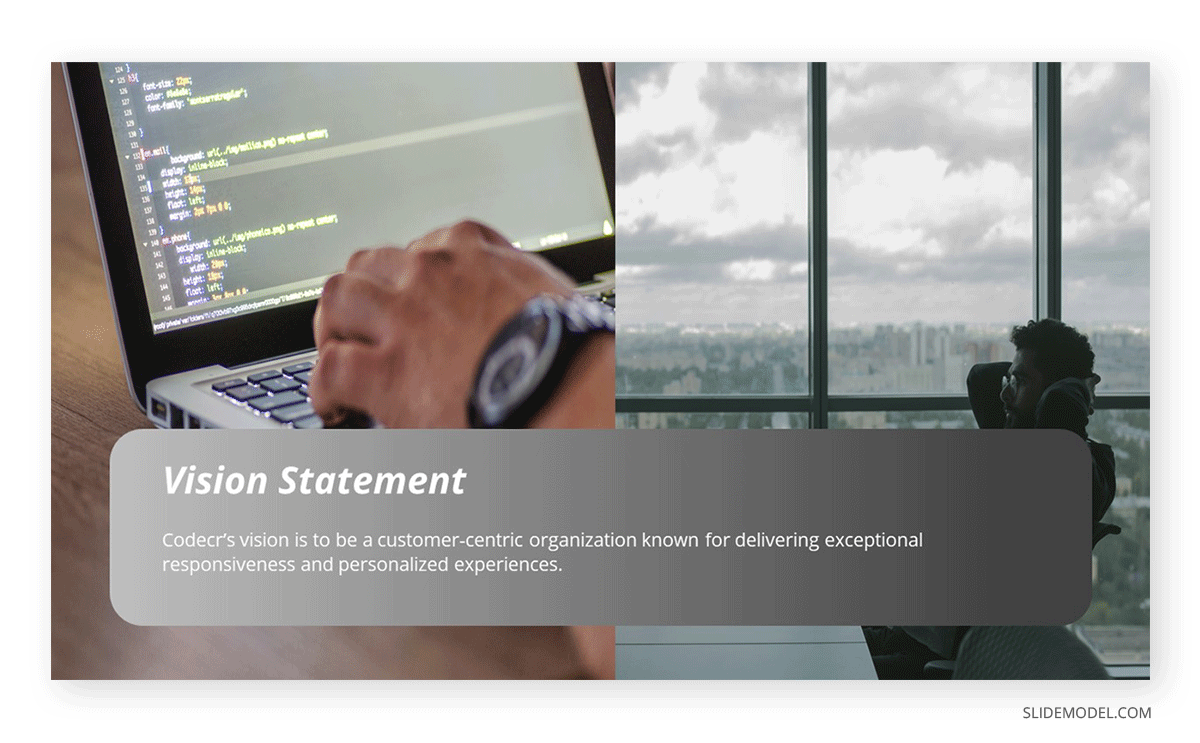
4. Communicate the Vision
Now that you have a desirable change vision put it to good use by communicating it to affected employees.
The challenge is turning communication channels like email, newsletters, and face-to-face meetings into exciting discussions that encourage greater buy-in. You may also use creative alternatives to traditional strategies, like conducting courses focusing on the business problems that the new vision tries to solve.
Kotter’s advice is simple: use every possible channel to communicate your vision and implementation plan and discuss it often.
Codecr invites a subject expert to discuss the importance of positive customer relationships in business growth, reinforcing its vision. The company also conducts regular implementation updates to keep employees informed and engaged.
5. Empower Action
More people understand the vision at this stage and are encouraged to support the change initiatives. But the willingness to take action is often insufficient to drive the desired changes, especially when there are huge blockers along the way. Organizations should empower action from the employees by removing those obstacles undermining the change vision.
These obstacles may include outdated processes, lack of resources, resistance from specific individuals or departments, or inadequate training. In this regard, organizations can provide access to relevant technologies, offer skill development programs, offer mentorship, or even incentivize performance.
Codecr’s existing processes contributed to its slow response to leads and missed opportunities. The company integrated Salesforce into its lead management to streamline its process and realize its vision of being a customer-centric organization. The company also provided its sales team with hands-on training on its use.
6. Generate Short-Term Wins
Organizations need their change vision to see the big picture of where they are heading. However, it’s hard to see compelling evidence of progress that way, and people may lose interest in the long run. While it’s paramount that employees understand the vision by heart, it’s equally important to plan milestones and wins to offer immediate validation and build momentum for the overall change initiative.
When planning milestones, organizations should consider setting SMART goals that align with the change vision. It’s essential to define clear criteria for success and establish timelines for achieving each milestone. Regularly review progress, make necessary adjustments, and communicate achievements to keep employees motivated and invested in the journey.
In our hypothetical example, Codecr may consider implementing an automated lead assignment system as a milestone to improve its lead and customer management.
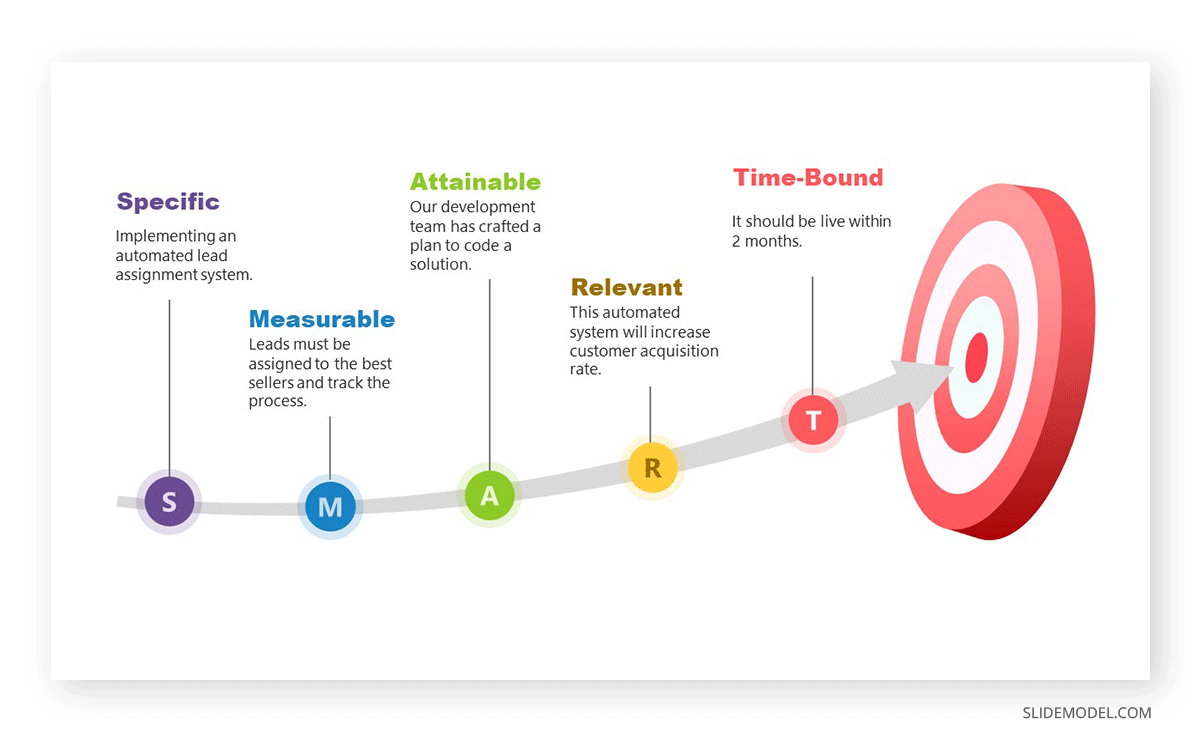
7. Build on Wins
It may seem like you are winning the battle, but you can’t declare victory until it’s over – this is the 7th lesson Kotter shared in his change management model. While achieving short-term wins is essential for building momentum and gaining support, it’s crucial to recognize that the change process is ongoing and requires sustained effort until the desired outcomes become a reality.
Therefore, once initial wins have been achieved, set new goals and targets to maintain the momentum and focus on further improvement. Use increased credibility from early wins and apply them to other areas of the organization or future change initiatives.
After implementing the new system, Codecr sets a customer acquisition rate target which should increase until they meet the desired outcome. It offered continuous training and support to employees to ensure they had the skills and knowledge needed to sustain the new customer-centric practices.
8. Institutionalize Change
The last step of Kotter’s change model is ensuring that the changes become the new social norm in the organization. It involves making a conscious effort to embed the desired behaviors, processes, and practices in the organization’s DNA so that they become the standard way of doing things.
One way to do this is to recognize the individual contributions of employees to the change adoption. This recognition helps people make the right connection between the change and its outcomes. Moreover, it cultivates a positive and supportive environment where employees feel valued and motivated to continue embracing and embodying the desired changes.
To anchor the changes in the corporate culture, Codecr aligned existing policies, procedures, and performance evaluations with the new customer management approach to ensure that the desired behaviors and practices are consistently reinforced and rewarded.
Benefits of Implementing the Kotter Change Model in Organizations
Kotter’s 8-Step Change Model provides a clear roadmap that guides leaders and employees through the change process, ensuring that important aspects are addressed systematically. It helps prevent confusion, reduce resistance, and increase the chances of successful implementation.
The model promotes diversity by encouraging organizations to involve employees across levels in the change process. This collaboration helps in breaking down silos, sharing expertise, and leveraging diverse perspectives that can lead to a more holistic and successful change implementation.
The model also promotes sustainable change through incremental wins as new behaviors and better practices are slowly embedded into the organization’s work culture.
Conclusion
Change is a difficult process. It is messy and often filled with unexpected twists and turns. While predicting and controlling every outcome is impossible, having a well-defined roadmap template for the change process helps organizations navigate the complexities and uncertainties.
Embracing change with Kotter’s 8-Step Change Model can pave the way for a successful transformation. Remember, change may be challenging, but the right approach can lead to remarkable growth and development.

